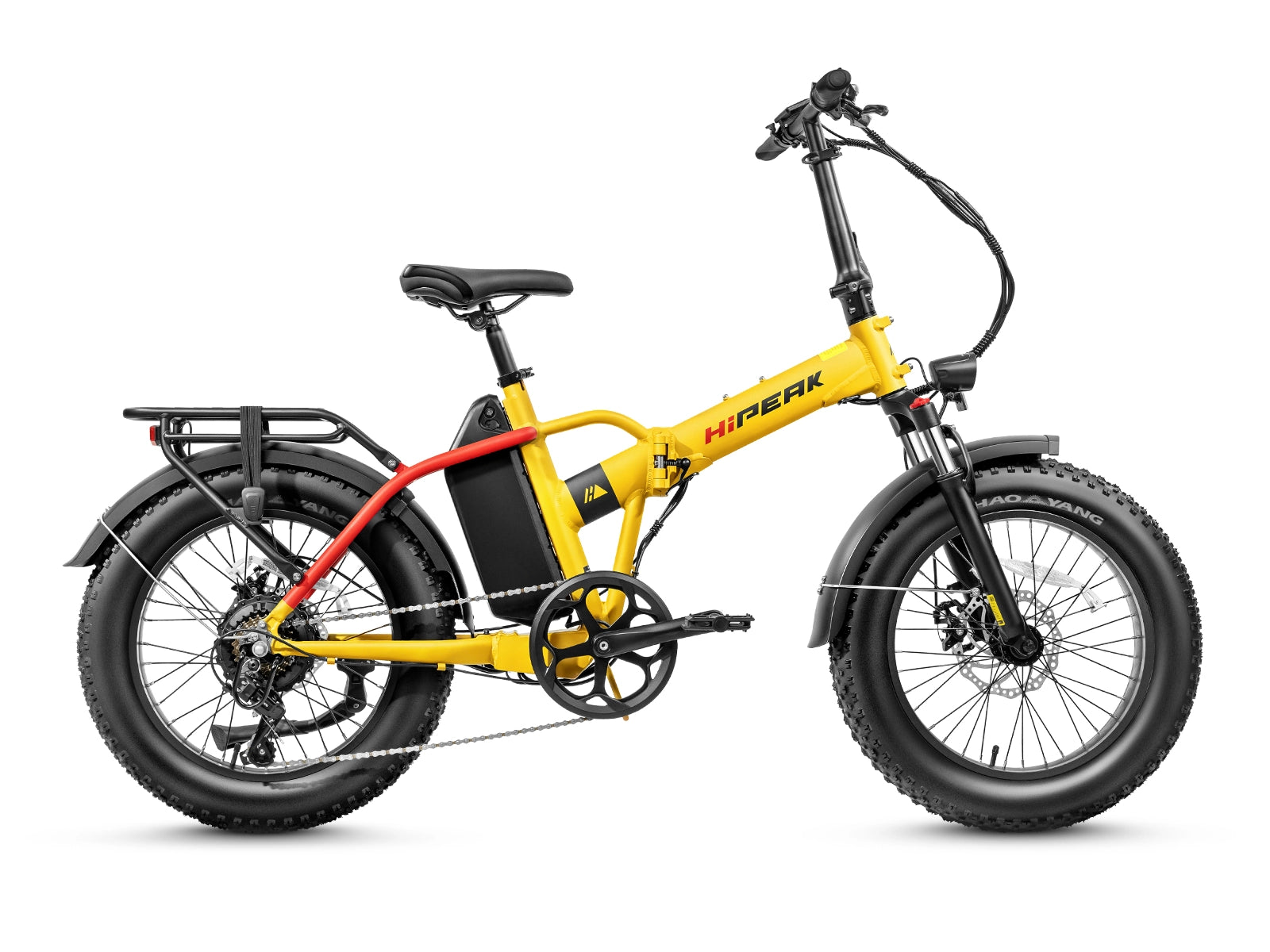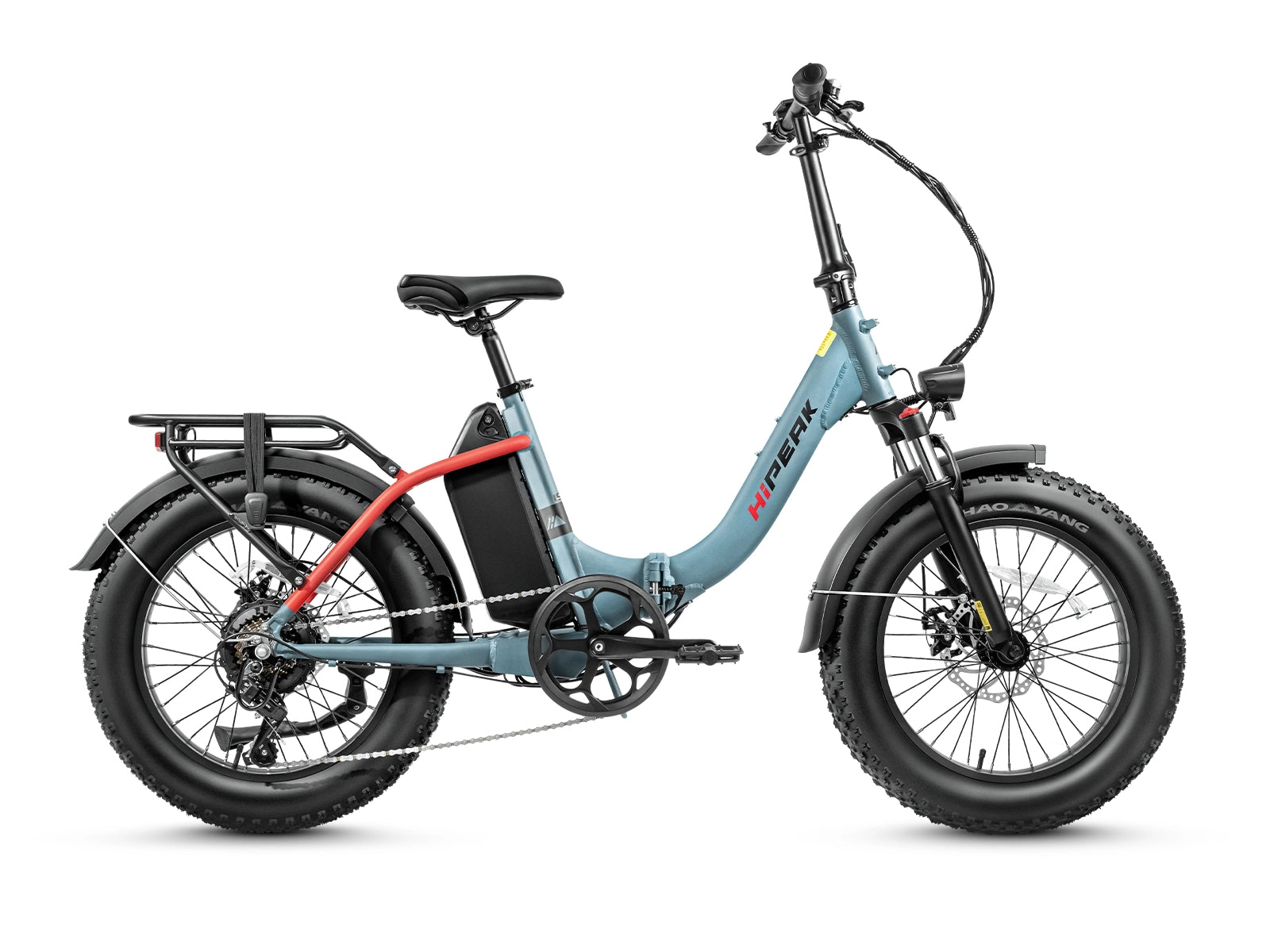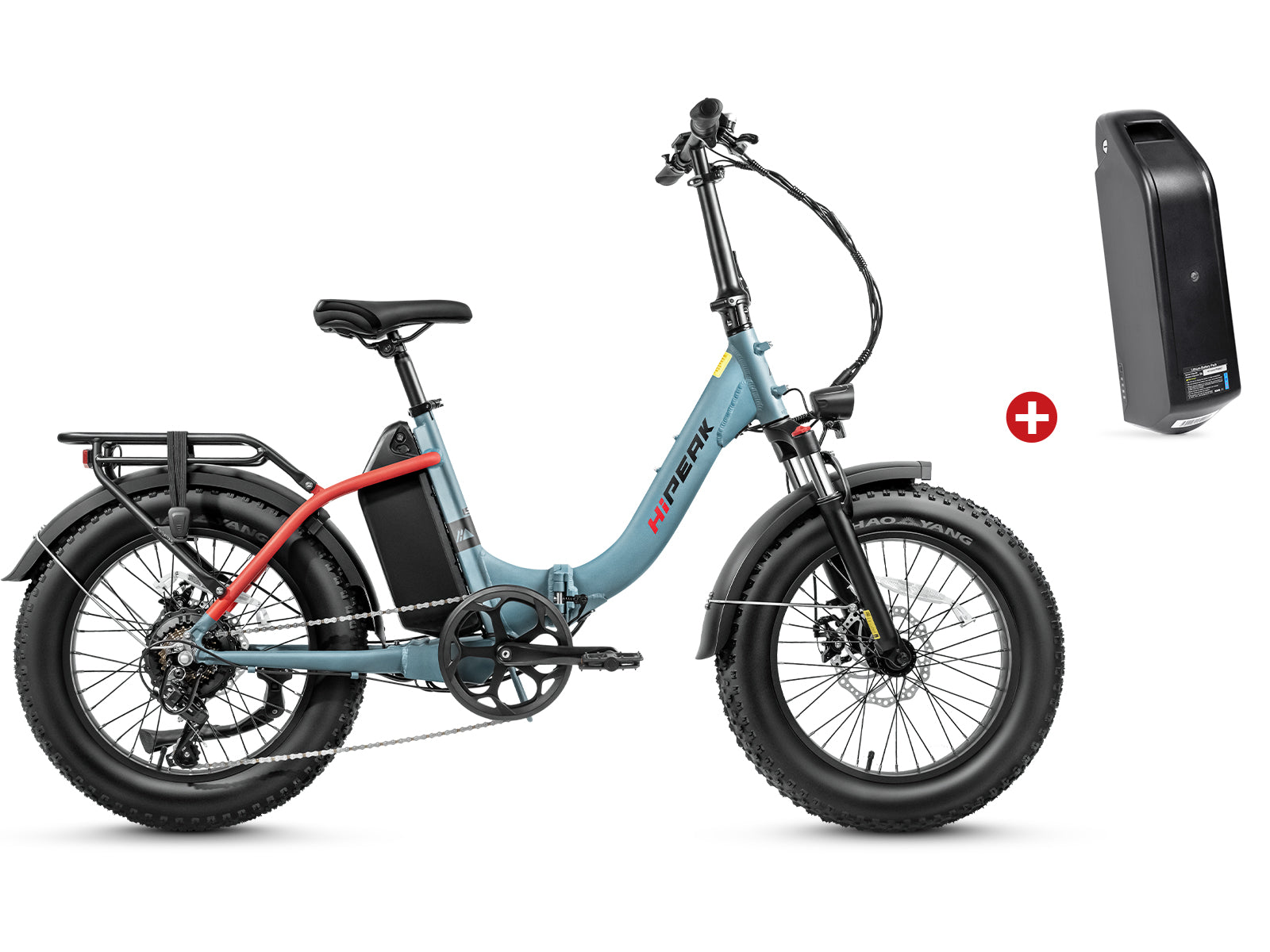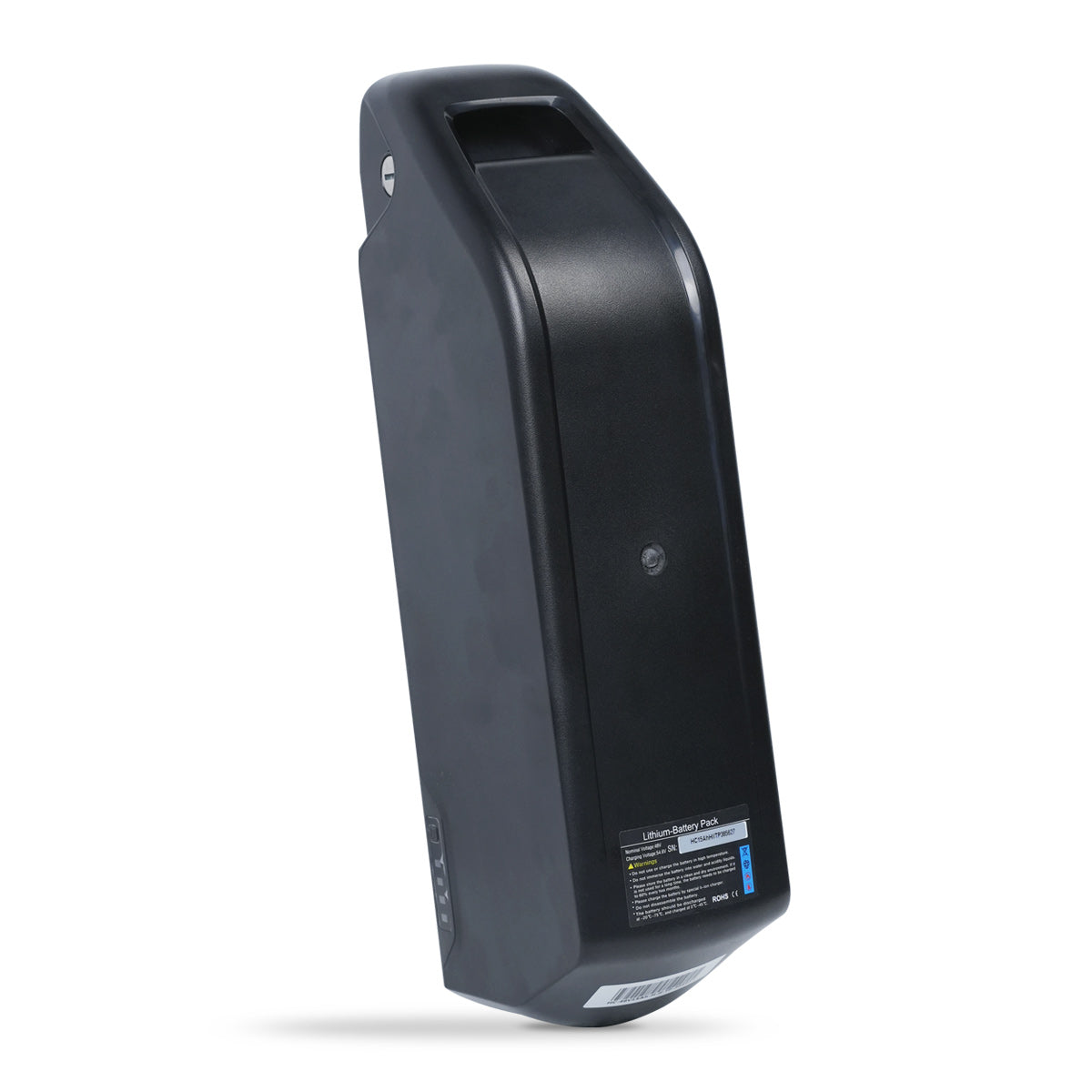How to Customize Your Electric Bike?

Electric bikes are becoming increasingly popular in today’s intelligent era, people are not satisfied with choosing those already configured electric bikes, many individuals choose to customize an electric bike by themselves. There are multiple factors to consider when customizing an e-bike, and this article will discuss them.
Determining your needs and preferences
Determining Riding style
Before customizing your electric bike, it's important to determine what type of riding you'll be doing. Do you plan on commuting to work or school, or will you be using your bike for leisurely rides around town? Will you be tackling steep hills or flat terrain? Knowing your riding style will help you choose the right components for your bike.
Customizing the appearance
Customizing the appearance of your electric bike is a fun way to make it your own. You can choose from a variety of colors and designs to create a bike that reflects your personality. You can also add accessories like baskets, lights, and fenders to enhance the functionality of your bike.
Knowing various customization options
In the following passage, we will discuss various customization options, including batteries, motors, frames, wheels, and accessories, which is essential to e-bike’s appearance and performance.
Batteries
One of the most important customization options for your e-bike is the battery. Different types of batteries offer varying levels of power, range, and weight. Some popular options include lithium-ion, lead-acid, and nickel-cadmium. When selecting a battery, consider your daily riding habits and the distance you plan to travel. A higher capacity battery may be required for longer commutes or more challenging terrain. Unlike most folding ebikes from other brands, which are using 48V 12-14Ah ebike batteries, HiPEAK's folding ebike is equipped with 48V 15Ah Lithium-ion battery. The higher power of the battery brings this ebike longer range. Choosing HiPEAK will be a worth investment for you.
Motors
The motor is another crucial aspect of your e-bike's performance. You can choose from various types of motors, including hub motors and mid-drive motors. Hub motors are mounted in the wheel hub and offer a smooth, quiet ride. Mid-drive motors are located near the pedals and provide a more natural riding experience. Depending on your needs, you can choose between high-torque or high-speed motors. HiPEAK's electric bike is equipped with a 750W brushless motor while those of most folding ebikes from other brands are 500W or less. This powerful motor could help you climb more easily and ride faster. 750-Watt electric bikes can give you great speed combined with smooth control.
Frames
Frames are an essential component of any bike, and they can be customized to suit your riding style and preferences. Different materials such as aluminum, carbon fiber, and steel offer varying levels of durability, weight, and rigidity. Depending on your needs, you can select a frame that provides a comfortable ride, maximum speed, or exceptional stability.
Wheels
Another customization option to consider is the wheel size and type. Depending on your riding style and terrain, you can choose from various wheel sizes, including 26-inch, 27.5-inch, and 29-inch wheels. Additionally, you can select from various types of wheels, such as standard spokes, bladed spokes, or carbon-fiber rims, to enhance your bike's performance.
Accessories
In addition, you also can personalize your e-bike with various accessories, including lights, fenders, racks, and bags. These accessories can enhance your bike's functionality, comfort, and aesthetics. For example, a high-quality headlight and taillight can improve your visibility, while fenders can protect you from mud and rain.
Choosing reliable components and brands
When customizing an electric bike, it is crucial to choose reliable components and brands to ensure optimal performance, safety, and durability. With so many options available on the market, it can be challenging to determine which parts and brands are the best for your needs. In the following passage, we will discuss how to identify reliable e-bike customization parts and brands.
Researching the brand's reputation
The first step in identifying a reliable e-bike brand is to research its reputation. Look for reviews from customers and industry experts to determine whether the brand is known for producing high-quality products. You can also check the brand's website and social media pages to learn more about its products, manufacturing processes, and customer service policies. In addition, buyers' comments are crucial to the brand's reputation.
Checking for certifications
Reliable e-bike brands often hold certifications from reputable organizations, such as the European Union's CE certification, the United States' UL certification, or the Japanese JIS certification. These certifications indicate that the products meet safety and quality standards set by independent organizations.
Considering the warranty
A strong warranty is another sign of a reliable e-bike brand. Look for brands that offer at least a one-year warranty on their products. A longer warranty period demonstrates that the brand is confident in its products and stands behind them.
Looking for reputable component brands
When customizing an e-bike, you may need to purchase individual components, such as batteries, motors, and wheels. Look for reputable brands that specialize in these components. For example, well-known battery brands include Samsung, LG, and Panasonic. For motors, popular brands include Bosch, Brose, and Shimano.
Checking for compatibility
When selecting components for your e-bike, make sure they are compatible with your bike's frame and other components. Some brands may only offer components that are compatible with their own e-bike models. Checking for compatibility can help prevent compatibility issues and ensure optimal performance.
Considering the cost of a customized e-bike
Customizing an electric bike can be an exciting and rewarding experience, but it's important to consider the costs involved before diving in. Here are some factors to keep in mind when estimating the cost of a custom electric bike:
- The bike itself: The cost of the bike can vary widely depending on the type of frame, size, and quality. A basic electric bike can start at around $500, while a high-end model could cost upwards of $10,000.
- Electric motor and battery: A quality electric motor and battery are essential for a reliable and long-lasting electric bike. Prices can range from a few hundred dollars up to several thousand, depending on the specifications.
- Upgrades and accessories: There are many upgrades and accessories available for electric bikes, such as suspension systems, better brakes, and higher-quality tires. These can add several hundred dollars to the total cost.
- Labor costs: If you plan on having a professional mechanic install the electric components and make other modifications, labor costs will need to be factored into the final price.
To find the best deals on custom electric bikes, it's important to do your research and shop around. Look for online retailers that specialize in electric bike parts and accessories, as they may offer competitive prices. You can also check out local bike shops and compare prices between different brands and models.
Another way to save money on a custom electric bike is to purchase used or refurbished components. Many bike enthusiasts sell their old parts online, and these can often be purchased at a fraction of the cost of new components.
In summary, the cost of a custom electric bike can vary widely depending on the components and upgrades chosen, but with careful planning and research, it's possible to build a high-quality electric bike without breaking the bank.
Installation and maintenance of customized e-bikes
Installation:
Follow manufacturer instructions: Ensure you follow the manufacturer's instructions for installation. If you are not confident in your abilities, seek the help of a professional.
- Check all parts: Inspect all parts for any signs of damage or wear before installation. Replace any damaged parts.
- Use proper tools: Use the correct tools for installation to avoid damage to parts.
- Test ride: Test ride the bike after installation to ensure all parts are working correctly.
Maintenance:
Keep the bike clean by washing it regularly. Dirt and grime can cause damage to parts and reduce efficiency. Check tires and brakes regularly for wear and damage. Replace worn parts. Check the battery regularly for charge and any signs of damage. If the battery is damaged or not holding a charge, replace it. Lubricate all moving parts regularly to reduce wear and tear and improve efficiency. Check all electronic components regularly for damage or wear. Replace any damaged parts. Store the bike properly when not in use, away from moisture and extreme temperatures.
By following these tips, you can ensure that your customized electric bike remains in top condition and provides the best riding experience possible. Remember to regularly inspect and maintain the bike, and seek professional help if necessary.
Refer to the laws of each country whether to allow the customization
- United States: In the United States, customized electric bicycles are legal as long as they meet the federal definition of an electric bicycle. The bike must have pedals and a motor that produces less than 750 watts and does not exceed speeds of 20 mph on level ground. Additionally, some states have their own laws regarding electric bicycles, so it's essential to check state-specific regulations.
- Canada: In Canada, electric bicycles are classified as either power-assisted bicycles (PABs) or electric motorcycles. PABs must have pedals and a motor that produces less than 500 watts and does not exceed speeds of 20 mph. Customized electric bicycles must meet these requirements to be considered PABs.
- United Kingdom: In the UK, electric bicycles are classified as either electrically assisted pedal cycles (EAPCs) or electric motorcycles. Customized electric bicycles can be classified as EAPCs if they meet certain requirements, such as having a maximum power output of 250 watts and not exceeding speeds of 15.5 mph. Electric motorcycles must be registered and have a license plate.
Conclusion
Customized electric bikes can meet people’s DIY ideas, but the process is relatively troublesome. After reading this article, I believe it can answer the doubts of people who want to customize one.





















Leave a comment